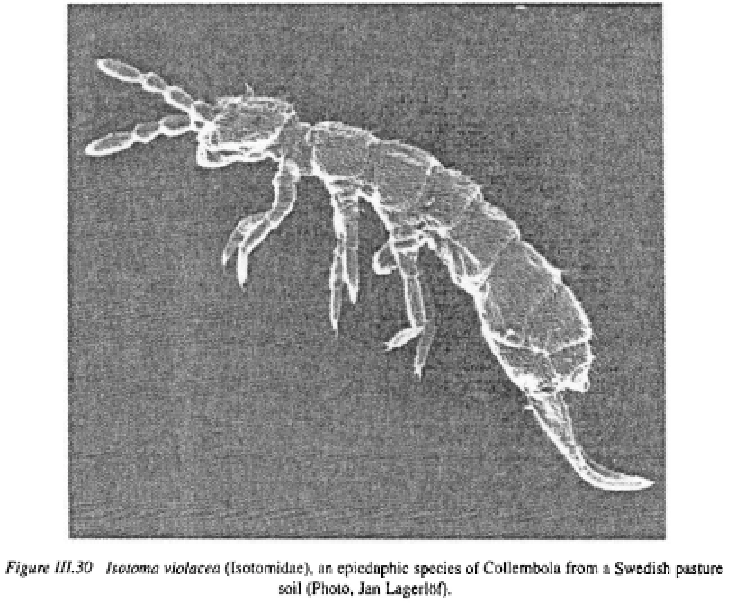Agriculture Reference
In-Depth Information
movements (Figure III.30). A further typical structure is the ventral tube whose many
functions include sensing the moisture status of the substrate, absorbing liquids, ions and
gases and attachment to the substrate (Sedlag, 1951). Their body lengths range from
a few tenths of a mm to 1 or 2 cm with individual biomasses of 1-20 µ g dry weight
(
ca.
3-60 µ g fresh weight).
They live in the litter or in the pore space of the upper 10 to 15 cm of soil and are
saprophagous, feeding mainly on fungi, bacteria or algae growing on decomposing plant
litter (Christiansen, 1964; Anderson and Healey, 1972; Kilbertus and Vannier, 1979,
1981; Ponge, 1991). There is, however, considerable variation between species, especially
between litter and soil dwellers. Saur and Ponge (1988) showed that the soil dwelling
Paratullbergia callipygos
ingests a substantial amount of soil (47.6 %) and can digest
cellulose as well as starch, tannins, fungal cytoplasm and chitin. Zinkler (1983) presented
evidence of digestion of hemicellulose by Collembola although it was assumed that it
may have been due to the activity of micro-organisms in the gut rather than the activity of
the animals' own enzymes. Consumption and assimilation by such litter-feeding species as
Onychiurus zschokkei
increases on the soil surface (Sadaka and Poinsot Balaguer, 1987)
due to a decreasing concentration of polyphenols and an increase in nitrogen
concentration of food resources.
Growth is continuous with 4 to 50 stadia, according to species (Hale, 1965a, b). Large
species generally have more stadia; nonetheless, for a given size, species with tracheae

